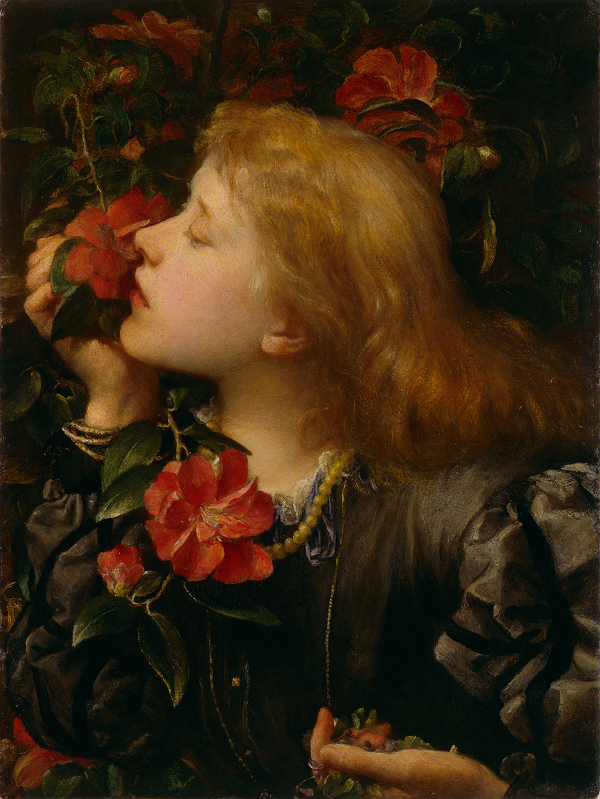 We are delighted to be a Corporate Partner of Watts Gallery, the artists’ village created by George Frederic Watts OM RA (1817-1904) and Mary Watts (1849-1938) just outside Guildford in Surrey.
We are delighted to be a Corporate Partner of Watts Gallery, the artists’ village created by George Frederic Watts OM RA (1817-1904) and Mary Watts (1849-1938) just outside Guildford in Surrey.
This summer, a special exhibition created in partnership with the University of Birmingham’s Barber Institute of Fine Arts will be shown at Watts Gallery – giving visitors an opportunity to see and ‘smell’ art.
Scented Visions: Smell in Art 1850-1915 is the first exhibition to explore the iconography and symbolism of scent in nineteenth and early twentieth-century art. Featuring paintings by, amongst others, Anna Alma-Tadema (1867-1943), Eleanor Fortescue-Brickdale (1872-1945), Sir John Everett Millais (1829-1896), Evelyn de Morgan (1855-1919), Dante Gabriel Rossetti (1828-1882), John William Waterhouse (1849-1917) and G F Watts (1817-1904), the exhibition examines how these artists conveyed scent and smell in their art.
And, bringing these ideas to life for 21st century visitors and working with the Spanish fashion and fragrance house Puig, the exhibition also features custom-designed scents developed to accompany two iconic paintings: The Blind Girl, 1856 (Birmingham Museums Trust) by John Everett Millais, and A Saint of the Eastern Church, 1867-68 (Birmingham Museums Trust) by Simeon Solomon. This multi-sensory approach will give visitors new ways to connect with art.
From exploring the popular image of women smelling flowers – exemplified in GF Watts’s much-loved painting of his first wife, Ellen Terry (Choosing), 1864 (National Portrait Gallery) – to the ‘Great Stink’ of 1858, the exhibition considers ways in which artists tried to give visual form to invisible smell.
Scented Visions is curated by Dr Christina Bradstreet, author of Scented Visions: Smell in Art, 1850-1914 (Penn State University Press, 2022) with support from Watts Gallery Exhibitions Curator, Corinna Henderson. The exhibition is presented in collaboration with Artphilia, the storytelling art curators, and Puig’s AirParfum olfactory technology.
Dr Christina Bradstreet says:
“Pre-Raphaelite and Victorian Aesthetic paintings are so often described as ‘multisensory’, but smell and its significance has been overlooked, despite being ‘under our noses’ all along. Many 19th – and early 20th-century ideas about smell and smelling, such as the belief that smell is disease or that rainbows emanate the sweet scent of fresh, wet meadows after a rainstorm, seem outlandish today. Yet this contextual information lends a new and vital perspective for understanding some of the most iconic Victorian paintings.”
For further information: wattsgallery.org.uk
Image: G F Watts, Ellen Terry (Choosing), 1864, oil on strawboard mounted on Gatorfoam, 47.2 x 35.2 cm. © National Portrait Gallery, London
Smith Greenfield has partnered with Watts Gallery Trust – the charity responsible for maintaining Watts Gallery – to offer its Friends, Patrons and members access to its expert insurance services. And, through a special arrangement, when Friends of the Gallery take out or renew a policy through Smith Greenfield the charity will receive a donation.

